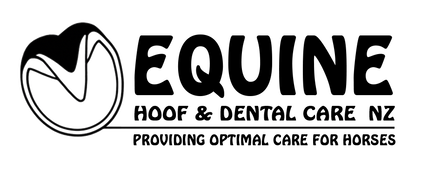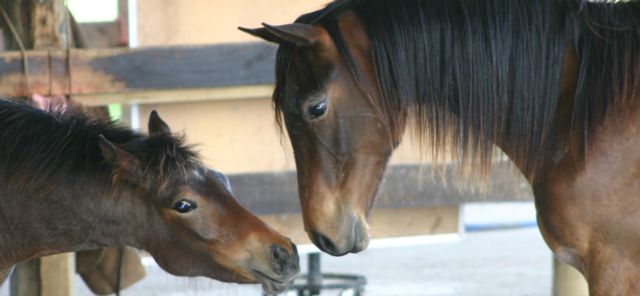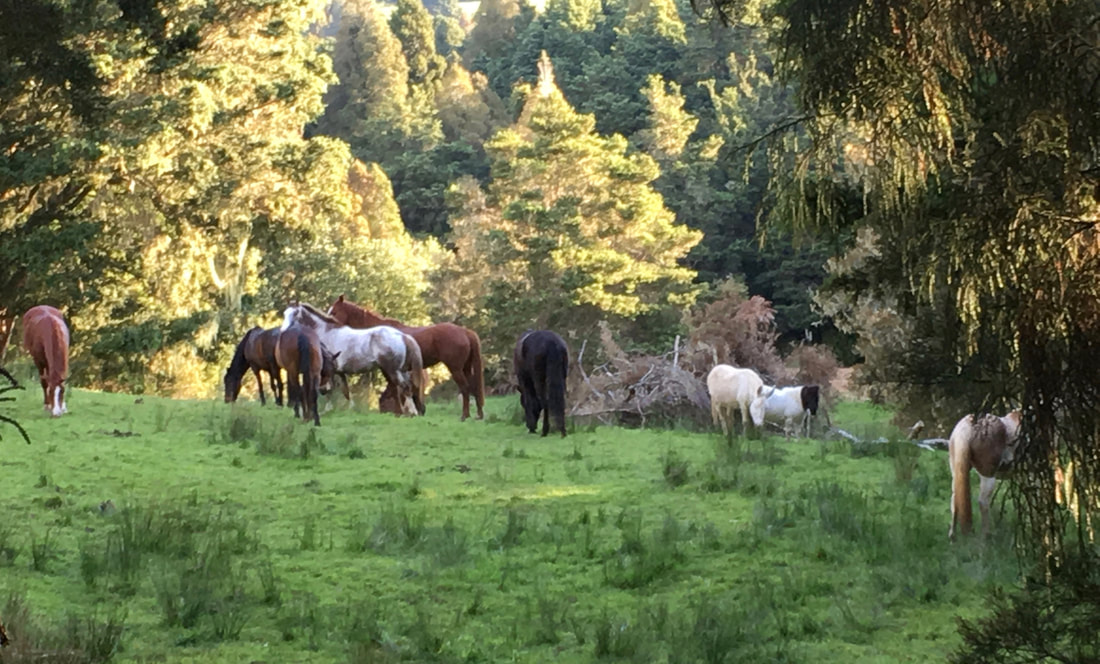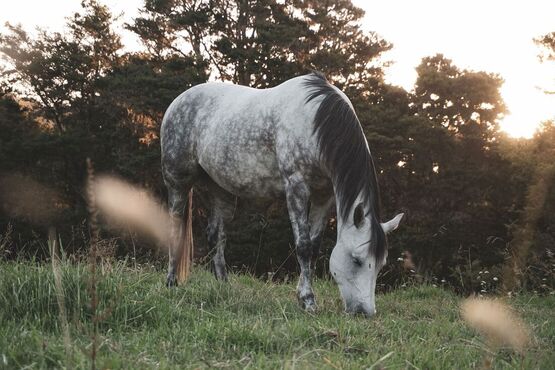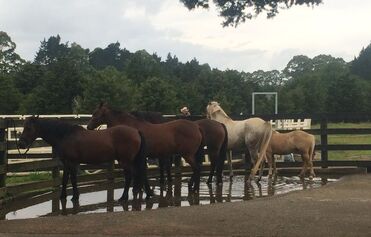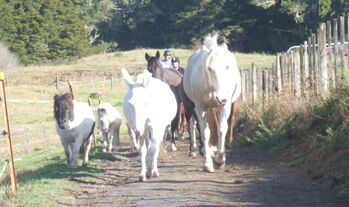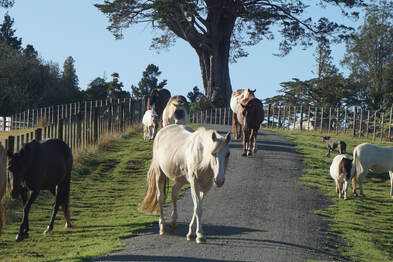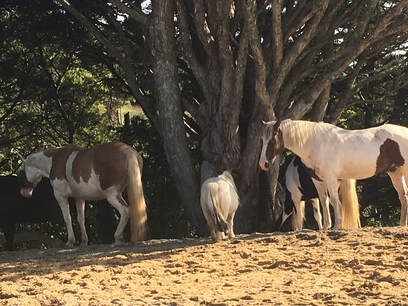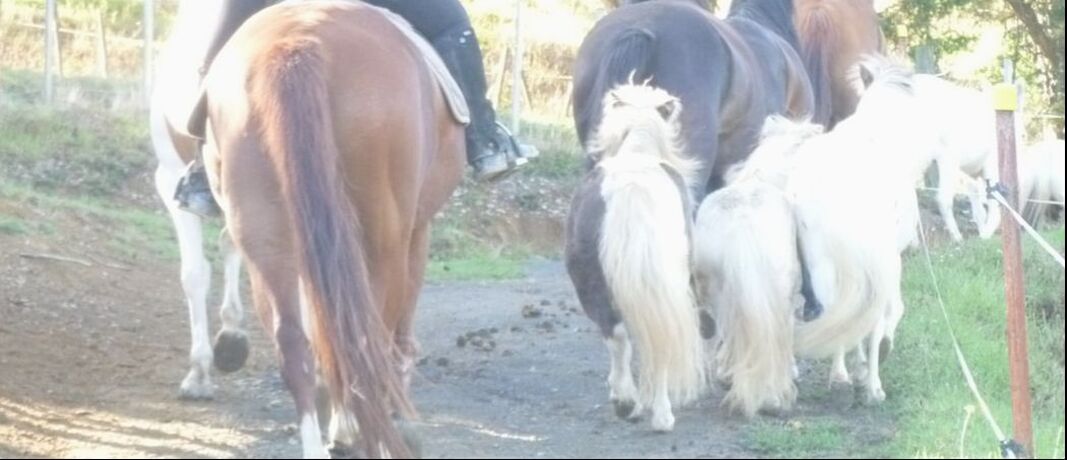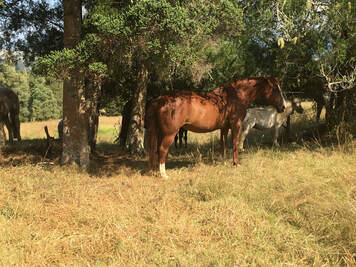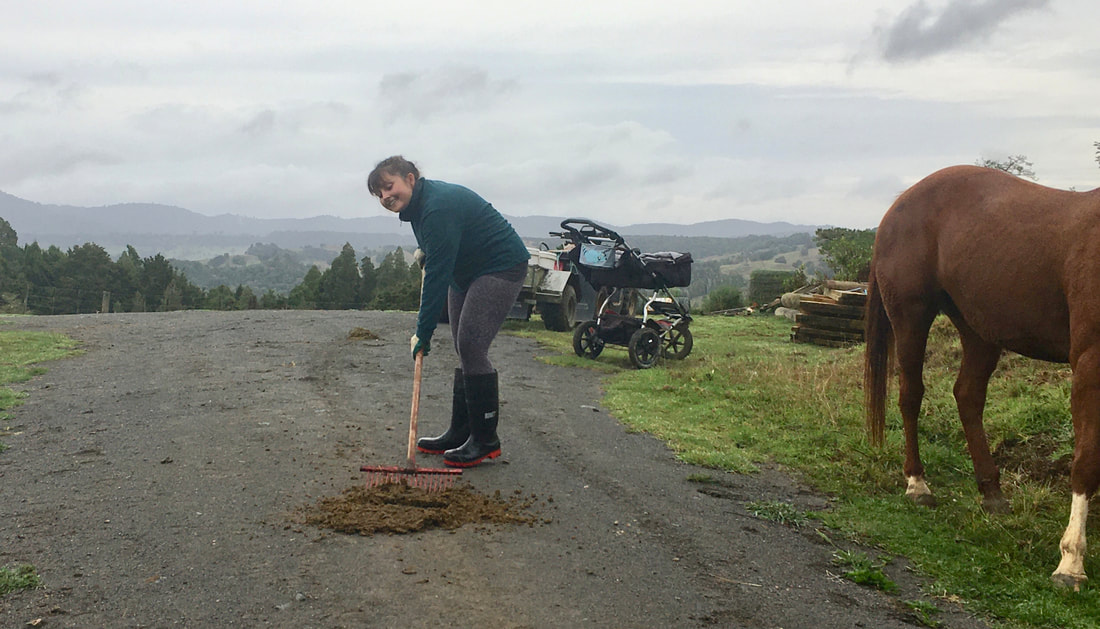Equine Hoofcare NZ
|
Equine Hoofcare NZ is about looking at the entire horse as a whole because 90% of issues start from the ground up leading into other problems with the horse's body. We strive for optimal hoof function, correct loading of the hooves, lifestyle and nutrition that will provide physiological and psychological health for our horses. In addition, how we interact with our horses is a big factor. We promote horsemanship methods so our horses can become our partners, whether we just ride for pleasure or at a high level of competition. If problems or pathology occur, we try to find the cause of the problem and then remove the cause, which will restore optimal health.
|
|
It is our job as horse owners to provide our domestic equines with an optimal environment, click below on each picture to find out what we can do.
|
Lifestyle & Herd LifeEver since leaving the prehistoric jungles the horse has been living in a herd for 24 hours each day. The cerebral cortex of a horse living in a herd is working properly, giving normal, correct orders for the functioning of other subordinated brain centres. The horse is psychologically sound and well balanced. Each member of a herd must know all of the other members and each member must be able to defend its rank and so on. As humans, we know the importance of our psychological health which must be in balance for us to stay healthy. Similarly, only when the horse is psychologically balanced can the health of the entire organism be optimal.
|
|
In nature, the environmental temperature is constantly fluctuating. The horse has about six different ways to maintain its body temperature of 38 degrees even through it is exposed to the changing weather, such as sun, wind and storms. Horses were not born with covers, blankets or leg wraps to protect them from the environmental changes.
|
Natural Low-Head PostureThe horse is not like a human that has a day-night rhythm. They graze (on their feet) for about 18 to 20 hours per day and then sleep or rest for about 4 to 6 hours per day, but not all at once. They can stand using neutral energy, because the joints in their legs can fix at certain angles (stay apparatus) through tendons and ligaments being in balance. Hooves do need to be kept at certain angles for this to take place. They also have a natural low-head posture when grazing and moving to maintain correct muscle development.
|
Daily Exposure of Hooves to WaterIn nature, the horse goes into the water most days to drink. They don't know that their hooves need to absorb moisture but they'd rather just spend some time drinking, playing and cooling off. The absorption of water prevents the hooves from drying out which keeps them elastic and supple to maintain their hoof mechanism. With a lack of water on hooves they can dry out and cause a lack of hoof mechanism, shock absorption, cracks and over time, contraction.
|
Body Weight - ChangesWith the changes in seasons and therefore, vegetation changes, the horse doesn't have the same amount and/or quality of food available to it all year round. At the end of the growing season, the horse should be at its fullest or 20% heavier than its average weight, while at the end of winter, the horse should be 20% lighter than its average weight.
|
Continuous Movement and Resting Places in the OpenThe horse is in constant (24 hour) motion. Horses in the wild move around approximately 15 to 20 km per day to find food and water, and they have been doing this for millions of years. The horse's heart is relatively small compared to its body therefore, the horse needs to be in constant motion to move blood through its body (metabolic efficiency). The hooves are especially important because with each step, they pump blood back up the legs to the rest of the body. In doing so, they function in the same way an auxiliary heart pumps blood around the body.
|
No Oil on Hooves; No Covers or BlanketsIn nature, there is no way for a horse to obtain oil or grease on its hooves. Horses that are kept in unnatural conditions have their hooves dry out and the hoof becomes brittle due to a lack of exposure to water. Oils and grease not only prevent the absorption of water, but also decay volatile fatty acids and ester.
|
Immediate and Direct Ground Contact of HoovesIn nature, the horse has immediate and direct ground contact for its entire life. A horse's hooves are suitable and resistant enough for all kinds of terrain. For the hoof to function optimally it should be exposed to all types of terrain to allow the hoof to develop naturally. This exposure to hard ground expands the hoof allowing optimal blood flow to support the horse's whole metabolism and its organisms, which is vital for optimal health.
|
Nutritional Variety and Continuous Uptake of FoodIn nature, nutritional variety is vast and food uptake is continuous due to horses grazing for 18 to 20 hours per day. Horses are designed to eat a wide range of natural vegetation in small amounts. This promotes optimal health of both the teeth and the large intestine.
|
Parasite ControlAs horses graze, they can swallow about 65 species of nematode parasites (worms) lying in the grass. As many as 150,000 parasites can live in the wall of a horse's large intestine. Parasitic worms live in the intestines of horses, ponies, donkeys, cows and sheep. Small numbers of worms can be tolerated, causing no effect on well being. Larger worm burdens can cause a range of problems including ill thrift, diarrhoea, colic and death. Pasture management and drug administration assist the horse’s immune system in keeping the intestinal population of worms under control. The immune response to worms is better in some horses and ponies than others and as such, some are more susceptible to worm infestation.
|
